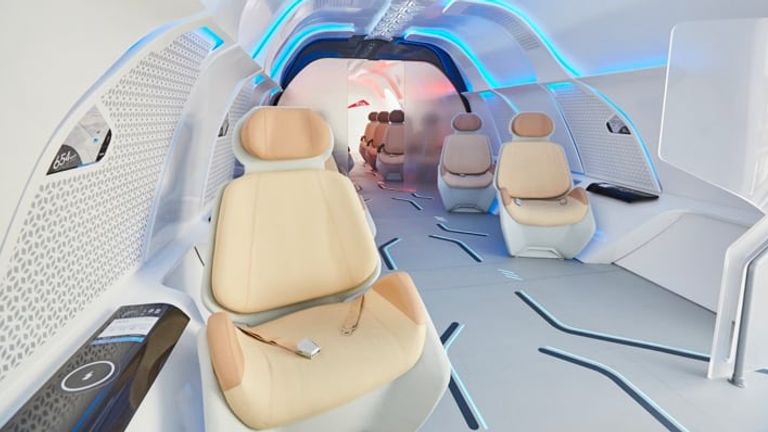Virgin Hyperloop has trialled its first ever journey with human passengers at more than 100mph in the Nevada desert.
Richard Branson‘s new technology, considered to be the future of high-speed ground transport, carries people in pods which travel through vacuum tubes.
The two passengers – Virgin Hyperloop executives Josh Giegel and Sara Luchian – reached speeds of up to 107mph (172kph) at the company’s DevLoop test site in Las Vegas on Sunday.
Footage showed the pod transporting the passengers and taking just 15 seconds to complete the test in the speedy excursion.
The system is designed to allow journeys of up to 670mph (1,079kph) with the technology using electric propulsion with passive magnetic levitation, creating low pressure within the tube which is in near-vacuum conditions.
It is also proposed to be entirely autonomous, quiet, direct-to-destination and on-demand.
Since Hyperloop is proposed to be built on columns or tunnelled underground, it could eliminate the dangers of at-grade crossings and require smaller rights of way than high-speed rail or a highway.
A trip between New York and Washington would take just 30 minutes using a hyperloop system – twice as fast as a commercial plane flight.
The company has previously run more than 400 tests without passengers at the Nevada site.
Jay Walder, chief executive of Virgin Hyperloop, said: “I can’t tell you how often I get asked ‘Is Hyperloop safe?’
“With today’s passenger testing, we have successfully answered this question, demonstrating that not only can Virgin Hyperloop safely put a person in a pod in a vacuum environment but that the company has a thoughtful approach to safety.”
The test comes a month after it was reported by Reuters that Virgin Hyperloop picked the US state of West Virginia to host a $500m (£379m) certification centre and test track to serve as a proving ground for its technology.
The company has said it is working toward safety certification by 2025 and commercial operations by 2030.


